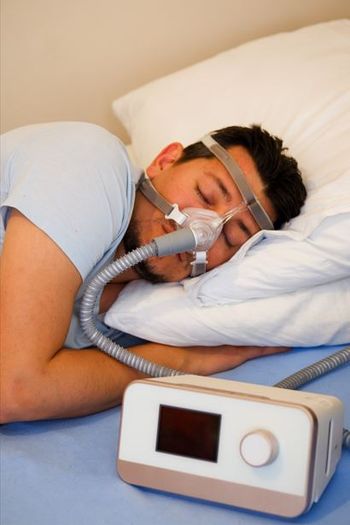
Migraine With Aura Tied to Stroke Risk for Women
BALTIMORE --Women who have migraine with visual symptoms have a 50% greater risk of ischemic stroke than women without the headaches, researchers reported.
BALTIMORE, Aug. 9 -- Women who have migraine with visual symptoms have a 50% greater risk of ischemic stroke than women without the headaches, researchers reported.
Smoking, use of oral contraceptives, and onset of the headaches with aura a year before the stroke also increased the risk, Leah R. MacClellan, M.S.P.H., of the University of Maryland, and colleagues, reported in the Aug. 10 issue of Stroke: Journal of the American Heart Association.
On the other hand, the researchers found no association between stroke and migraine without aura.
And the chance that a young woman in the 15-to-44-age group with migraine and aura will have an ischemic stroke is low-one-to-two for every 10,000 women each year, said Steven J. Kittner, M.D., a study co-author and director of the Maryland Stroke Center here.
Clarifying the clinical features of the headache-stroke relationship may provide useful insights into the association, the researchers said. For example, the effects of migraine frequency, lifetime duration of migraine, and the time of migraine onset and stroke risk, and a possible anatomic predilection are unclear.
To assess these relationships, the researchers analyzed data from a population-based case-control study of young white and African-American women, the Stroke Prevention in Young Women Study (recruitment 1992 to 1996; 2001 to 2003).
Their study included 386 women, ages 15 to 49, with a first ischemic stroke. They were matched in a 1:2 ratio with 614 age- and ethnicity-matched controls with no history of stroke.
After answering a questionnaire, the women were classified as having no migraine, probable migraine without visual aura, or probable migraine with visual aura.
Women with migraine and aura had 1.5 greater odds of ischemic stroke (95% CI, 1.1-2.0). The risk was highest among those with no history of hypertension, diabetes, or myocardial infarction compared with nonmigraineurs, the researchers reported.
Compared with women with no migraine history, women with a migraine and aura history of 12 or more years had a 1.3-fold greater stroke risk.
For women who reported new migraine and aura starting within a year before their stroke or study enrollment, the adjusted odds ratio was 6.9 times higher (CI, 2.3 to 21.2).
Women with migraine and aura who smoked and were current users of oral contraceptives had seven times the stroke risk of women with migraines who neither smoked nor used oral contraceptives (OR 7.0, CI, 1.3 to 22.8).
With regard to the location of a migrainous infarct, the data showed no appreciable anatomic difference in risk of stroke between circulation in the anterior and posterior regions in relation to the migraine.
Also, they said patent foramen ovale has been implicated as a possible mechanism for the stroke risk because it is a risk factor for young-onset stroke and is associated with migraine prevalence.
However, in this study no evidence for the role of the defect was found because the data were insufficient, they said.
Study limitations included the self-reported migraine history, which lacked specific data on untreated duration of headache, or time and duration of aura symptoms, for example.
The proportion of migraineurs in this study was high compared with the prevalence in the general population, possibly because of misclassification of migraine status. Also, the researchers noted that they did not control for factors such as medication use, cholesterol, alcohol consumption, and physical activity.
Given the contributing risk factors, the researchers advised neurologists and physicians to encourage their patients with migraine and aura to minimize their stroke risk by not smoking and finding alternatives to estrogen-containing contraceptives.
The association indicates a high-risk population for which appropriate management strategies are warranted, they concluded.
This study was supported in part by the Office of Research and Development, Medical Research Service, the Research Enhancement Award Program in Stroke, the Geriatrics Research, Education, and Clinical Center, Department of Veterans Affairs; a cooperative agreement with the Cardiovascular Health Branch, Division of Adult and Community Health, Centers for Disease Control, the National Institute of Neurological Disorders and Stroke, the National Institutes of Health Office of Research on Women's Health; the National Institute on Aging Pepper Center Grant, the University of Maryland General Clinical Research Center Grant, General Clinical Research Centers Program, National Center for Research Resources, and the National Institutes of Health.
Newsletter
Enhance your clinical practice with the Patient Care newsletter, offering the latest evidence-based guidelines, diagnostic insights, and treatment strategies for primary care physicians.



















































































































































































































































































